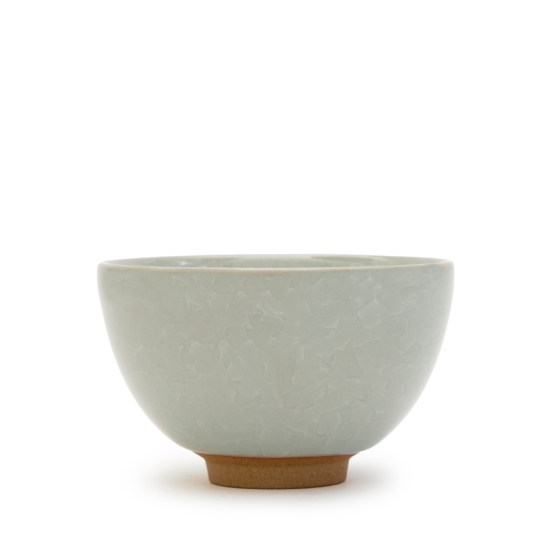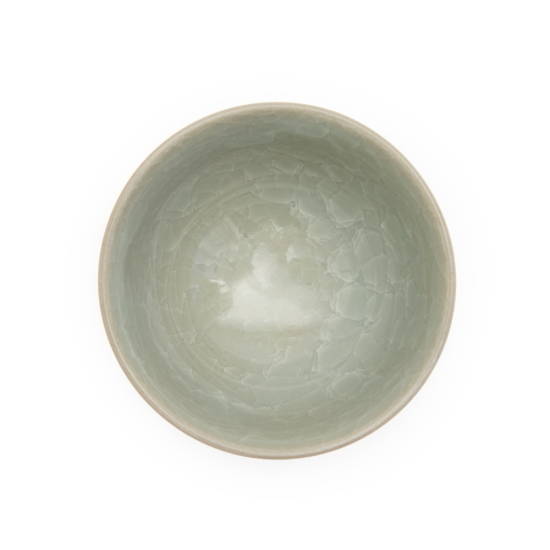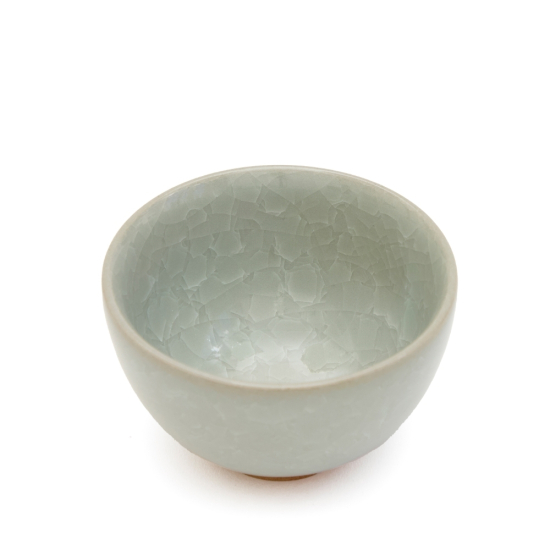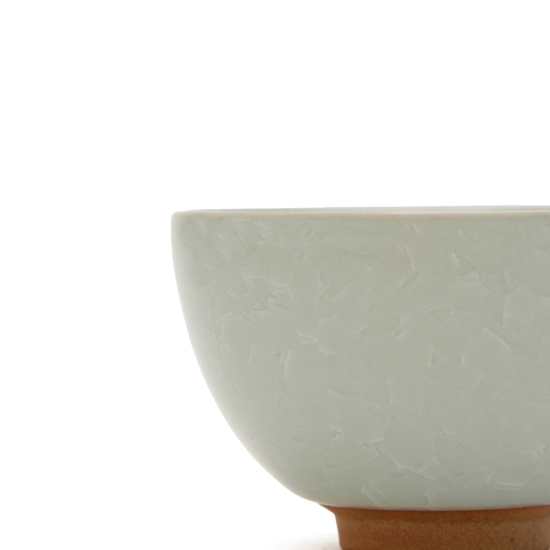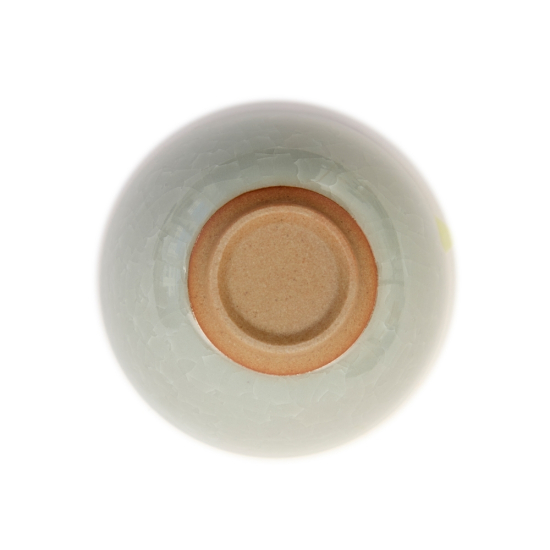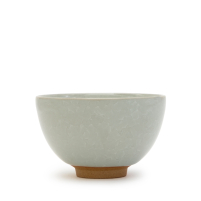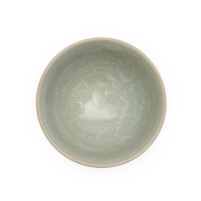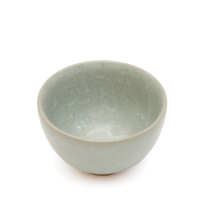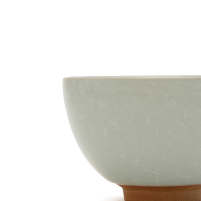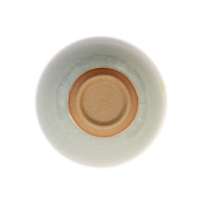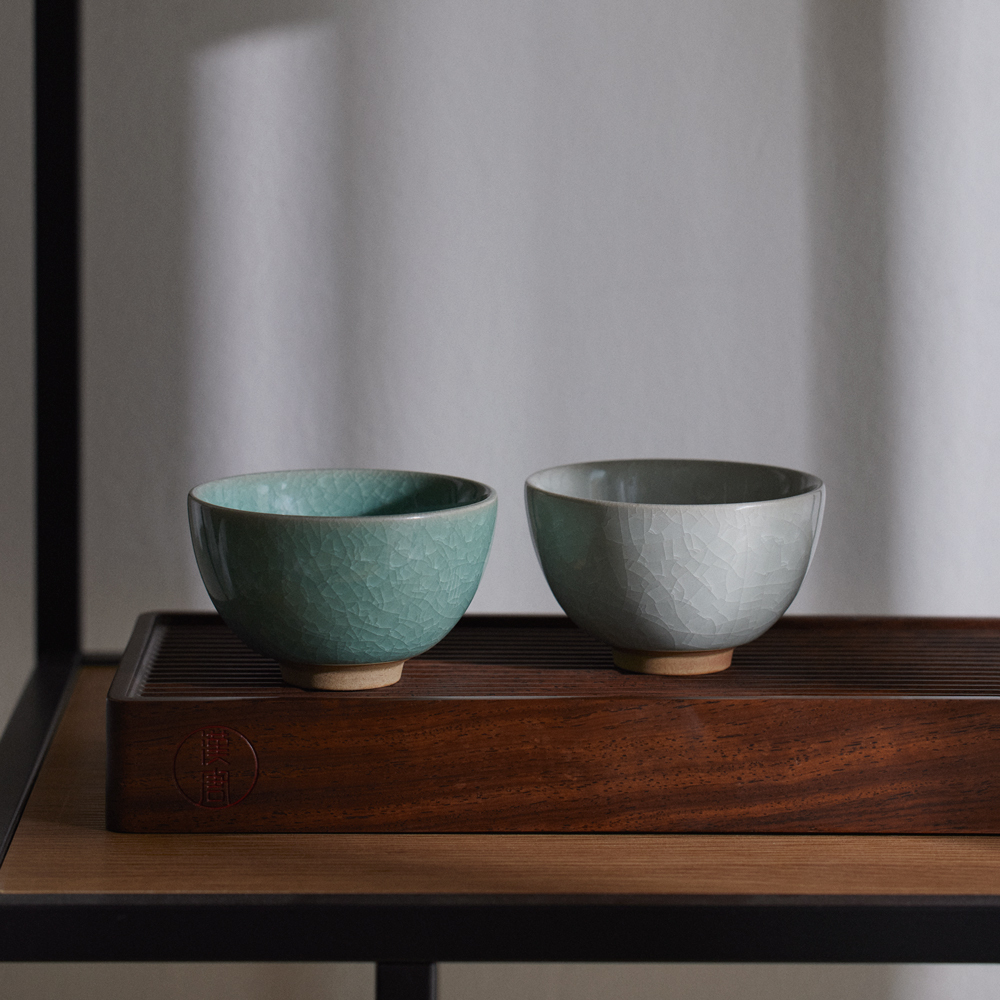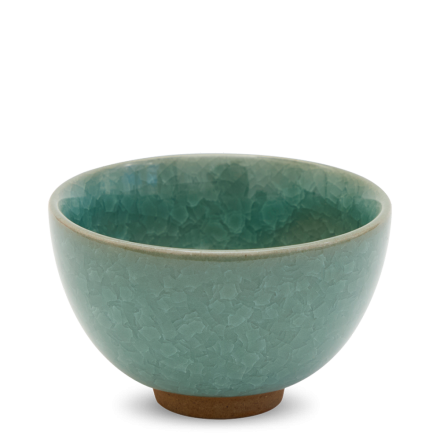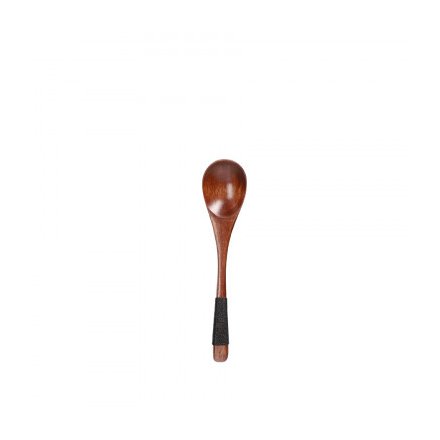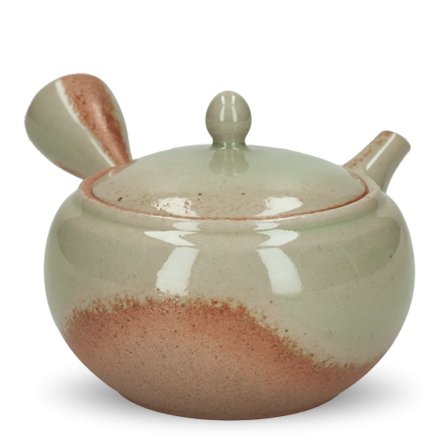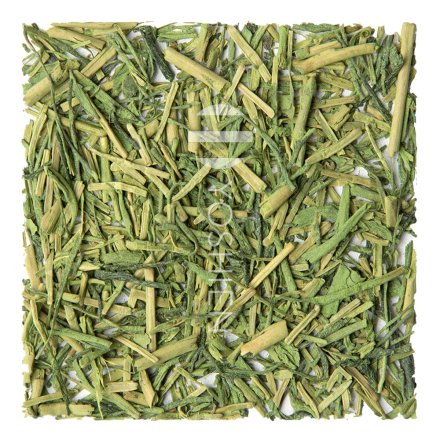Produced in the historic Mino province, present-day Gifu prefecture, Mino-yaki has a long ceramic history dating back to the 11th century, and since the 19th century has specialised in porcelain for everyday crockery. Mino ceramic production developed in correlation with that of Seto, in neighbouring Aichi prefecture, where one of the legendary Six Ancient Kilns of Japan was located. A variety of styles and glazing techniques were produced in Mino following the Japanese tea ceremony, or Chanoyu, boom in the Momoyama period (1573–1615), including yellow Kiseto, black Setoguro and Tenmoku glazes, as well as Shino and Oribe wares.
Kan-nyu 貫入
The cracking that appears on the surface of glazed ceramics is known as Kan-nyu in Japanese and is highly regarded for its aesthetic quality. Crackles, or crazing, appear as a result of the differing expansion and contraction rates between the base and glaze during firing.



